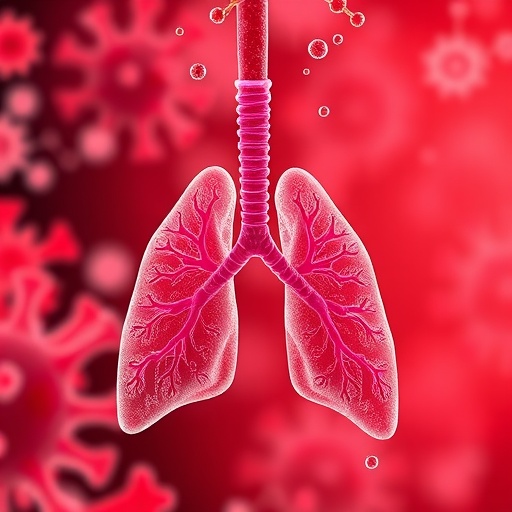Multi-country outbreak of cholera, external situation report #31 – 29 October 2025 – ReliefWeb

Global Cholera Outbreak Report: An Analysis of Setbacks to Sustainable Development Goals
Executive Summary
This report details the global cholera situation from 1 January to 28 September 2025. The ongoing outbreak represents a significant challenge to the achievement of multiple Sustainable Development Goals (SDGs), most notably SDG 3 (Good Health and Well-being) and SDG 6 (Clean Water and Sanitation). With a cumulative total of 518,324 cases and 6,508 deaths reported across 32 countries, the crisis underscores a failure in providing basic services and protecting vulnerable populations. The mortality rate in 2025 has already surpassed figures from the previous two years, indicating a worsening trend that demands urgent, coordinated action aligned with the 2030 Agenda for Sustainable Development.
Direct Impact on SDG 3: Good Health and Well-being
The cholera outbreak is a direct contravention of SDG Target 3.3, which aims to end the epidemics of communicable diseases by 2030. The scale of the health crisis highlights a severe regression in public health outcomes.
Key Health Indicators (as of 28 September 2025)
- Total Cases: 518,324 reported cases, representing a major public health failure.
- Total Deaths: 6,508 reported deaths, a stark indicator of the challenge to ensure healthy lives and promote well-being for all at all ages.
- Geographic Spread: The outbreak affects 32 countries across five WHO regions, demonstrating a widespread threat to global health security, a key component of SDG 3.
Escalating Mortality Trends
- 2025 Mortality: The 6,508 deaths reported by September 2025 have already exceeded the total for 2024.
- 2024 Mortality: The 6,028 deaths in 2024 marked a 50% increase from 2023.
This escalating trend signals a critical failure in disease prevention and control, moving the global community further away from its SDG 3 targets.
Root Causes and Failure to Achieve SDG 6: Clean Water and Sanitation
The persistence and spread of cholera, a waterborne disease, is a clear symptom of inadequate progress on SDG 6. The outbreak is fundamentally linked to a lack of access to safely managed drinking water and sanitation services.
- Inadequate Infrastructure: The high number of cases points to systemic failures in providing the basic services outlined in SDG Target 6.1 (universal and equitable access to safe and affordable drinking water) and Target 6.2 (access to adequate and equitable sanitation and hygiene).
- Regional Disparities: The highest number of cases were recorded in the Eastern Mediterranean and African Regions, highlighting the deep inequalities in access to clean water and sanitation that hinder sustainable development.
Implications for Broader Sustainable Development
The cholera crisis extends beyond health, impacting several other SDGs and threatening to reverse development gains.
Challenges to Other Key SDGs
- SDG 1 (No Poverty): Cholera disproportionately affects the poorest communities, increasing healthcare costs, reducing productivity, and trapping households in a cycle of poverty and disease.
- SDG 11 (Sustainable Cities and Communities): Outbreaks are often concentrated in informal settlements and urban areas lacking basic services, undermining efforts to make cities and human settlements inclusive, safe, resilient, and sustainable.
Global Response and the Role of SDG 17: Partnerships for the Goals
International cooperation is critical to managing the outbreak, as reflected in the global monitoring and vaccine stockpile management efforts. This aligns with SDG 17, which calls for strengthening global partnerships.
Vaccine Stockpile Management
In September 2025, the average global stockpile of Oral Cholera Vaccine (OCV) was 5.2 million doses. For the first time in three months, this figure surpassed the emergency threshold of 5 million doses. While this represents a positive step in reactive global health cooperation (SDG 17), the heavy reliance on emergency vaccination underscores a failure in the primary prevention measures outlined in SDG 6.
Analysis of SDGs, Targets, and Indicators
1. Which SDGs are addressed or connected to the issues highlighted in the article?
-
SDG 3: Good Health and Well-being
The article is centered on the global cholera outbreak, a major public health crisis. It details the number of cases, deaths, and the regions affected, directly addressing the goal of ensuring healthy lives and promoting well-being for all at all ages.
-
SDG 6: Clean Water and Sanitation
Cholera is a waterborne disease that spreads primarily through contaminated water and food. A large-scale outbreak, as described in the article, is a direct indicator of a failure to provide safe drinking water and adequate sanitation, which are the core objectives of SDG 6.
2. What specific targets under those SDGs can be identified based on the article’s content?
-
SDG 3: Good Health and Well-being
- Target 3.3: “By 2030, end the epidemics of AIDS, tuberculosis, malaria and neglected tropical diseases and combat hepatitis, water-borne diseases and other communicable diseases.” The article’s entire focus is on the “cholera upsurge,” tracking the number of cases and deaths related to this specific water-borne disease, which aligns directly with the goal of ending such epidemics.
- Target 3.d: “Strengthen the capacity of all countries, in particular developing countries, for early warning, risk reduction and management of national and global health risks.” The reporting of data across five WHO regions and the specific mention of the “average stockpile of Oral Cholera Vaccine (OCV)” demonstrate the global mechanism for managing a health risk like cholera.
-
SDG 6: Clean Water and Sanitation
- Target 6.1: “By 2030, achieve universal and equitable access to safe and affordable drinking water for all.” The existence of 518,324 cholera cases is a clear implication that this target is not being met in the 32 affected countries, as the disease is transmitted through unsafe water.
- Target 6.2: “By 2030, achieve access to adequate and equitable sanitation and hygiene for all…” Similar to Target 6.1, the widespread nature of the cholera outbreak implies significant gaps in sanitation infrastructure, which leads to the contamination of water sources and the spread of the disease.
3. Are there any indicators mentioned or implied in the article that can be used to measure progress towards the identified targets?
-
For Target 3.3 (End epidemics of water-borne diseases):
- Incidence of cholera: The article explicitly provides this data: “a cumulative total of 518,324 cholera cases.” This number serves as a direct indicator of the scale of the epidemic.
- Cholera mortality rate: The article states “6,508 deaths” were reported. This data can be used to calculate the mortality rate, which is a key indicator of the severity of the disease and the effectiveness of the response.
-
For Target 3.d (Strengthen capacity for health risk management):
- Vaccine stockpile levels: The article mentions that the “average stockpile of Oral Cholera Vaccine (OCV) was 5.2 million doses.” This figure is a direct indicator of the global capacity to respond to and prevent cholera outbreaks.
-
For Targets 6.1 and 6.2 (Access to safe water and sanitation):
- Prevalence of water-borne disease (Proxy Indicator): While the article does not provide direct data on water and sanitation infrastructure, the high number of cholera cases (“518,324”) and deaths (“6,508”) across 32 countries serves as a powerful proxy indicator. These figures imply a significant lack of access to safely managed drinking water and sanitation services in the affected regions.
4. Summary Table of SDGs, Targets, and Indicators
| SDGs | Targets | Indicators Identified in the Article |
|---|---|---|
| SDG 3: Good Health and Well-being | 3.3: End the epidemics of… water-borne diseases… |
|
| SDG 3: Good Health and Well-being | 3.d: Strengthen the capacity… for management of national and global health risks. |
|
| SDG 6: Clean Water and Sanitation | 6.1: Achieve universal and equitable access to safe and affordable drinking water for all. |
|
| SDG 6: Clean Water and Sanitation | 6.2: Achieve access to adequate and equitable sanitation and hygiene for all… |
|
Source: reliefweb.int
What is Your Reaction?
 Like
0
Like
0
 Dislike
0
Dislike
0
 Love
0
Love
0
 Funny
0
Funny
0
 Angry
0
Angry
0
 Sad
0
Sad
0
 Wow
0
Wow
0
















































:focal(1500,1000)/https://media.globalcitizen.org/a6/9a/a69a4720-d8a1-4715-b596-18738d03c05c/rotary_polio_hero_image.jpg?#)







/countries/sri-lanka/photo-credit---dmc-sri-lanka.tmb-1200v.jpg?sfvrsn=dc298bcc_1#)


















